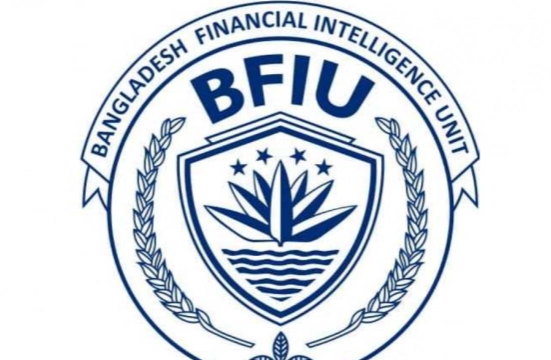To mitigate risks associated with public blockchain networks, the paper proposed appointing an entity with the authority to “control and limit access” to cryptocurrency
assets.
Permissionless blockchains, like those underlying cryptocurrencies such as Bitcoin and Ethereum, operate without centralized control or regulation. Here are some key concerns that the BIS has pointed out:
- Financial Stability: Permissionless blockchains can introduce volatility and instability into the financial system. Their highly speculative nature and the potential for rapid price swings can impact traditional financial institutions and markets. BIS
- Regulatory Challenges: Traditional banks are subject to a variety of regulations designed to ensure stability, protect consumers, and prevent illegal activities. Permissionless blockchains, by design, often bypass these regulatory frameworks, which can create gaps in oversight and compliance.
- Cybersecurity Risks: These systems are not immune to attacks. Vulnerabilities in the code or smart contracts can be exploited, leading to potential financial losses or disruptions. Banks operating in or interacting with these systems need to be vigilant about cybersecurity.
- Operational Risks: Integrating permissionless blockchain technology into existing banking infrastructure can be complex and fraught with operational risks. Banks need to ensure that their systems can handle the unique challenges posed by blockchain technology.
- Liquidity and Market Risk: The liquidity of assets on permissionless blockchains can vary significantly, and the market for these assets can be less mature compared to traditional financial markets. This can pose risks for banks holding or trading in such assets.
- Consumer Protection: The lack of central oversight means that consumers using permissionless blockchains may not have the same protections they would with traditional financial institutions. This could lead to issues with fraud, loss of funds, and other consumer harm.
The BIS’s warnings are part of a broader discussion about how emerging technologies like blockchain are reshaping the financial landscape and the need for updated regulatory approaches to manage these changes effectively. BIS
1. Systemic Risk
- Volatility: Permissionless blockchains, especially those supporting cryptocurrencies, can exhibit extreme price volatility. This can create systemic risk if traditional financial institutions become significantly exposed to these assets.
- Interconnectedness: The financial system is increasingly interconnected, and disruptions in one area (like a blockchain-based financial service) could potentially spill over into traditional banking and financial markets.
2. Regulation and Compliance
- Gaps in Oversight: Permissionless blockchains operate independently of central authorities, which can create gaps in regulatory oversight. Traditional financial systems have layers of regulation to ensure transparency and stability, while permissionless systems might not.
- Cross-Border Issues: Blockchains operate globally, and different jurisdictions might have varying regulations. This can lead to conflicts and challenges in enforcing compliance and protecting consumers.
3. Cybersecurity Threats
- Vulnerabilities: Blockchains are built on complex cryptographic algorithms, and vulnerabilities can be exploited. Hacks and exploits in blockchain networks or smart contracts can result in significant financial losses.
- Decentralized Nature: While decentralization is a key feature of permissionless blockchains, it can also make it harder to coordinate responses to security breaches or fraud.
4. Operational Challenges
- Integration Difficulties: Integrating blockchain technology with existing financial systems can be technically challenging. Banks need to address compatibility issues, ensure secure interfaces, and manage the risks of implementing new technologies.
- Scalability: Many permissionless blockchains face scalability issues, which can impact transaction speeds and costs, especially as they grow. This can affect their usability for large-scale financial transactions. BIS
5. Market and Liquidity Risks
- Liquidity: Assets traded on permissionless blockchains might have lower liquidity compared to traditional financial assets. This can lead to challenges in buying or selling these assets without impacting their price significantly.
- Market Manipulation: The relatively less regulated environment of blockchain markets might make them more susceptible to manipulation or fraudulent activities.
6. Consumer Protection
- Lack of Recourse: If something goes wrong in a permissionless blockchain environment, consumers may have limited recourse compared to traditional banking. There might be fewer protections against fraud, theft, or errors.
- Anonymity and Fraud: While blockchain transactions are transparent, the pseudonymous nature of many blockchains can make it difficult to trace and address fraudulent activities.
7. Legal and Financial Implications
- Legal Status: The legal status of blockchain assets and transactions can be uncertain. This uncertainty can create challenges for banks trying to comply with legal requirements and manage their legal risks.
- Accounting and Reporting: Traditional accounting and financial reporting standards may not be well-suited to handle the complexities of blockchain transactions and assets.
BIS’s Recommendations
To address these risks, the BIS and other regulatory bodies often recommend several approaches: BIS
- Enhanced Regulation: Updating regulatory frameworks to better address the unique features of permissionless blockchains.
- Collaboration: Encouraging collaboration between financial institutions, regulators, and technology developers to address risks and develop best practices.
- Monitoring and Research: Ongoing research and monitoring of blockchain technologies to understand their impact and develop appropriate responses.
In summary, while permissionless blockchains offer innovative and disruptive potential, they also introduce new risks and challenges. The BIS and other financial authorities continue to evaluate these risks and advocate for strategies to manage them effectively.
Certainly! Here’s a deeper dive into the key concerns raised by the Bank for International Settlements (BIS) regarding permissionless blockchains: BIS

1. Systemic Risk
Volatility:
- Price Fluctuations: Cryptocurrencies and other blockchain-based assets are known for their high volatility. This can lead to sudden and severe changes in asset values, which might impact financial institutions that hold or invest in these assets.
- Market Reactions: Large-scale movements in the blockchain market can cause ripple effects in traditional financial markets. For example, a significant drop in cryptocurrency prices might affect institutions with substantial crypto holdings or exposure.
Interconnectedness:
- Contagion Risk: Financial systems are interconnected. Distress in one part of the system, such as a major blockchain-based financial service, can affect other areas of the financial system. For instance, issues in a blockchain lending platform could lead to broader financial instability if other institutions are heavily involved.
2. Regulation and Compliance
Gaps in Oversight:
- Lack of Central Control: Permissionless blockchains operate without a central authority, which means they can evade traditional regulatory frameworks. This lack of oversight makes it challenging to enforce regulations related to financial stability, anti-money laundering (AML), and counter-terrorist financing (CTF).
- Decentralized Governance: Many blockchain networks are governed by decentralized communities rather than centralized bodies. This decentralized approach can complicate the enforcement of financial regulations.
Cross-Border Issues:
- Jurisdictional Conflicts: Since blockchains operate globally, different jurisdictions may have conflicting regulations. For example, a blockchain application might comply with regulations in one country but run afoul of regulations in another, complicating enforcement and legal compliance.
- Regulatory Arbitrage: Entities might exploit differences in regulatory standards across jurisdictions to avoid stringent regulations, creating challenges for effective oversight.
3. Cybersecurity Threats
Vulnerabilities:
- Code Exploits: Permissionless blockchains rely on complex code and smart contracts. Vulnerabilities in these can be exploited by hackers, leading to theft or loss of funds. High-profile hacks in the DeFi (Decentralized Finance) space illustrate these risks. BIS
- Network Attacks: Blockchain networks can be targeted by attacks such as 51% attacks, where a single entity gains control of the majority of network mining power, potentially allowing them to double-spend or alter transaction history.
Decentralized Nature:
- Coordination Challenges: In the event of a security breach, decentralized networks might struggle with coordinated responses. Unlike centralized institutions with established security protocols, decentralized networks may lack the structure to quickly address and mitigate attacks. BIS
4. Operational Challenges
Integration Difficulties:
- Technical Complexity: Integrating blockchain technology with traditional financial systems involves overcoming significant technical hurdles. This includes ensuring compatibility between blockchain platforms and existing banking infrastructure.
- Infrastructure Requirements: Banks must build or adapt infrastructure to handle blockchain transactions, which may involve significant investment and adjustment to existing systems.
Scalability:
- Transaction Throughput: Many blockchains face scalability issues, which can affect transaction speed and cost. For instance, Bitcoin and Ethereum have historically struggled with scaling, leading to delays and high transaction fees during periods of high demand.
- Resource Consumption: Some blockchains, particularly those using proof-of-work (PoW) consensus mechanisms, consume large amounts of computational resources and energy, which can have environmental and operational implications.
5. Market and Liquidity Risks
Liquidity:
- Market Depth: Assets on permissionless blockchains may have limited market depth compared to traditional assets. This can make it difficult to execute large trades without significantly affecting the asset’s price.
- Price Impact: Lower liquidity can lead to greater price impact when large transactions are conducted, potentially causing market instability.
Market Manipulation:
- Pump-and-Dump Schemes: The less regulated environment of blockchain markets can make them more susceptible to manipulation. Pump-and-dump schemes, where the price of an asset is artificially inflated before being sold off by manipulators, can lead to significant losses for investors. BIS
- Fake Projects: Scams and fraudulent projects can proliferate in the unregulated blockchain space, leading to financial losses for unsuspecting participants.
6. Consumer Protection
Lack of Recourse:
- Dispute Resolution: In traditional financial systems, consumers have access to various dispute resolution mechanisms. In the decentralized world, there may be fewer options for addressing grievances or recovering lost funds.
- Regulatory Protections: Permissionless blockchains often lack the consumer protection regulations that apply to traditional financial institutions, making users more vulnerable to fraud and error. BIS
Anonymity and Fraud:
- Pseudonymity: While blockchain transactions are transparent, the pseudonymous nature of many blockchains can make it difficult to trace and address fraudulent activities. This anonymity can be exploited for illicit purposes, including money laundering and other financial crimes.
7. Legal and Financial Implications
Legal Status:
- Uncertain Classification: The legal status of blockchain assets can be ambiguous. Issues related to the classification of cryptocurrencies as securities, commodities, or other financial instruments can create legal uncertainties for banks and financial institutions.
- Tax Implications: The treatment of blockchain transactions for tax purposes can be complex and varies by jurisdiction, potentially leading to compliance challenges for banks and their customers.
Accounting and Reporting:
- Valuation Challenges: The volatility and unique characteristics of blockchain assets can make valuation and accounting practices challenging. Traditional accounting frameworks may not be well-suited to handle the complexities of these assets.
- Regulatory Reporting: Banks must navigate new reporting requirements related to blockchain transactions and assets, which may involve adapting existing systems and processes to accommodate these new requirements.
In summary, while permissionless blockchains offer significant potential for innovation, they also present a range of risks and challenges that need careful management. The BIS and other financial authorities are actively working to understand these risks and develop appropriate regulatory and operational responses to ensure financial stability and protect consumers.

FAQ: Risks of Permissionless Blockchains
1. What are permissionless blockchains?
Answer: Permissionless blockchains are decentralized networks where anyone can participate without needing approval from a central authority. Examples include Bitcoin and Ethereum. These blockchains operate on open-source protocols and rely on a distributed network of nodes to validate transactions and maintain the ledger.
2. Why is volatility a concern for banks with permissionless blockchains?
Answer: Volatility refers to the high fluctuations in the value of cryptocurrencies and blockchain-based assets. This can impact banks by affecting the value of their holdings, potentially leading to financial instability. Large price swings can also create uncertainty and risk for traditional financial markets that interact with these assets.
3. How do permissionless blockchains create regulatory challenges?
Answer: Permissionless blockchains operate without central oversight, making it difficult to enforce traditional financial regulations such as anti-money laundering (AML) and counter-terrorist financing (CTF). The global and decentralized nature of these blockchains can lead to jurisdictional conflicts and regulatory gaps.
4. What cybersecurity risks are associated with permissionless blockchains?
Answer: Cybersecurity risks include vulnerabilities in the blockchain’s code or smart contracts, which can be exploited by hackers. These vulnerabilities can lead to theft or loss of funds. Additionally, the decentralized nature of these networks can complicate coordinated responses to attacks.
5. What are the operational challenges for banks integrating blockchain technology?
Answer: Banks face technical complexities when integrating blockchain technology with existing systems. Challenges include ensuring compatibility, addressing scalability issues, and managing the resources needed for blockchain operations. Integration also involves adapting infrastructure and procedures to accommodate new technology. BIS
6. How does liquidity affect permissionless blockchains?
Answer: Liquidity refers to the ease with which assets can be bought or sold without significantly affecting their price. Permissionless blockchains may have lower liquidity compared to traditional markets, leading to difficulties in executing large transactions and potentially causing price instability.
7. What consumer protection issues arise with permissionless blockchains?
Answer: Permissionless blockchains often lack the consumer protections found in traditional financial systems. Issues include limited recourse for disputes, susceptibility to fraud, and inadequate support mechanisms. The pseudonymous nature of blockchain transactions can also make it challenging to trace and address fraudulent activities. BIS
8. How do permissionless blockchains affect financial stability?
Answer: The decentralized and often speculative nature of permissionless blockchains can introduce systemic risks, such as volatility and market instability. Disruptions in blockchain-based systems can have spillover effects on traditional financial institutions and markets, impacting overall financial stability.
9. What is the BIS’s stance on managing the risks associated with permissionless blockchains?
Answer: The BIS advocates for updated regulatory frameworks to address the unique risks posed by permissionless blockchains. They emphasize the need for enhanced collaboration between financial institutions, regulators, and technology developers. The BIS also supports ongoing research and monitoring to better understand and mitigate these risks.
10. Are there any benefits to permissionless blockchains that might outweigh the risks?
Answer: Yes, permissionless blockchains offer several potential benefits, including increased transparency, reduced transaction costs, and enhanced financial inclusion. They also enable innovation in areas like decentralized finance (DeFi) and digital assets. However, these benefits must be weighed against the risks, and appropriate measures should be taken to manage and mitigate those risks. BIS

Advantages of Permissionless Blockchains BIS
- Decentralization:
- Resilience: By distributing control across a network of nodes, permissionless blockchains are less vulnerable to single points of failure. This can increase the system’s resilience against attacks and failures.
- Reduced Censorship: No central authority controls the network, which can help prevent censorship and promote greater freedom of transactions and information. BIS
- Transparency and Immutability:
- Open Ledger: Transactions are recorded on a public ledger that is accessible to anyone. This transparency helps in verifying transactions and ensures that all activities are traceable.
- Immutable Records: Once transactions are recorded, they cannot be altered or deleted, which enhances data integrity and reduces the risk of fraud.
- Financial Inclusion:
- Access to Services: Permissionless blockchains can provide financial services to individuals who are unbanked or underbanked, especially in regions with limited access to traditional banking infrastructure. BIS
- Low Barriers to Entry: Users do not need permission from a central authority to participate, which lowers the entry barriers for accessing financial services and applications.
- Innovation and Flexibility:
- Smart Contracts: Permissionless blockchains often support smart contracts, which are self-executing contracts with code that automatically enforce terms. This can streamline processes and reduce the need for intermediaries.
- Diverse Applications: The technology supports a wide range of applications beyond cryptocurrencies, including decentralized finance (DeFi), non-fungible tokens (NFTs), and decentralized applications (dApps).
- Cost Efficiency:
- Lower Transaction Fees: In some cases, blockchain transactions can have lower fees compared to traditional financial systems due to the absence of intermediaries. BIS

Disadvantages of Permissionless Blockchains
- Security and Vulnerability:
- Cybersecurity Risks: Despite their resilience, permissionless blockchains are still susceptible to hacks, vulnerabilities in smart contracts, and other security threats.
- Lack of Regulation: The absence of a central authority can make it harder to enforce security standards and protect against malicious activities.
- Scalability Issues:
- Transaction Speed: Many permissionless blockchains face scalability challenges, resulting in slower transaction speeds during periods of high demand.
- High Costs: Network congestion can lead to higher transaction fees, making the system less efficient for microtransactions or high-volume applications.
- Regulatory and Legal Challenges:
- Uncertainty: The lack of central oversight and the global nature of permissionless blockchains can lead to regulatory uncertainties and legal challenges, including compliance with anti-money laundering (AML) and counter-terrorist financing (CTF) laws.
- Jurisdictional Issues: Discrepancies in regulations across different jurisdictions can create complications for users and businesses operating in multiple regions. BIS
- Consumer Protection:
- Limited Recourse: Users may have limited options for dispute resolution or recovering funds in the event of fraud or error due to the decentralized nature of the system.
- Pseudonymity: While blockchain transactions are transparent, the pseudonymous nature can complicate efforts to trace and address fraudulent activities.
- Environmental Impact:
- Energy Consumption: Some permissionless blockchains, particularly those using proof-of-work (PoW) consensus mechanisms, consume significant amounts of energy, raising concerns about their environmental impact.
- Complexity and Usability:
- Technical Complexity: Understanding and using blockchain technology can be complex, which may deter some users from adopting it.
- Integration Issues: Integrating blockchain solutions with existing systems can be challenging and may require significant adjustments or new infrastructure.
In summary, while permissionless blockchains offer significant advantages such as decentralization, transparency, and financial inclusion, they also come with notable disadvantages, including security risks, scalability issues, and regulatory challenges. Balancing these pros and cons is crucial for individuals, businesses, and regulators engaging with blockchain technology. BIS





Leave feedback about this